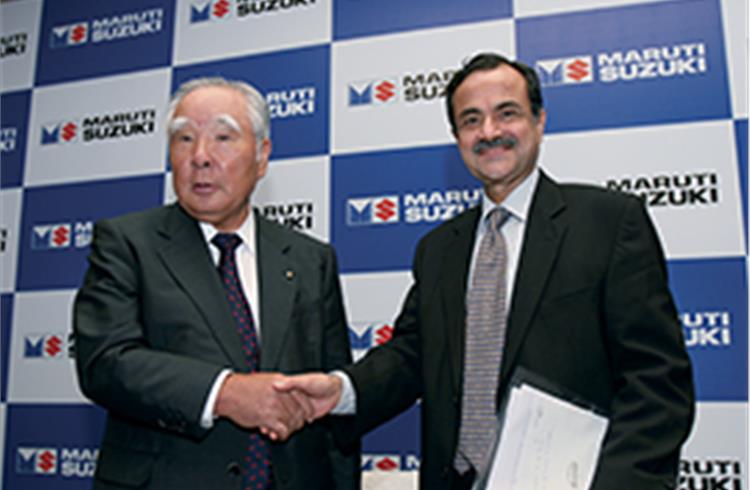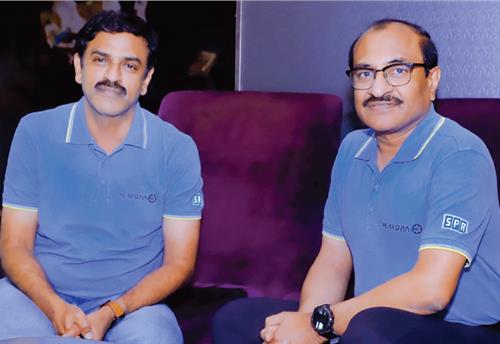Suzuki’s passage to India
It has been a journey that has had its fair share of controversies but that has not stopped Maruti from being right ahead, says P Tharyan.
In May this year, the Centre divested its residual 10.27 percent share for a consideration of Rs 2360 crore. It was the last good dividend for an investment made in 1981 when it had forayed into making cars in partnership with Suzuki Motor Corporation. It was also an end to a bitter sweet relationship that had at one point of time even threatened the prospects of Maruti.
The primary aim of the joint venture was to make affordable cars for the Indian middle class. Initially, Suzuki had a 26 percent stake which was up to 40 percent which was done in 1987. By 1992, it was an equal partner. This was the time when relations between the two began to sour. A fresh agreement was signed stipulating that the government could nominate its managing director in Maruti for five years after which Suzuki was to appoint its nominee.
BONE OF CONTENTION
The post of chairman, in the meantime, would have to be filed by the partner who did not appoint the MD. This clause became a major bone of contention between the partners. Thongs reached a flashpoint in 1995 when Suzuki flayed the government for going slow on its modernisation plan. In June 1996, two government nominees perceived as being close to Suzuki were removed. These were Jagdish Khattar and Krishna Kumar. They were replaced by EAS Sarma and Anup Mukherji.
The rift between Suzuki and the government only widened and in 1997, Prabir Sengupta took over as chairman of Maruti. Meanwhile, the 1992 joint venture clause proved an irritant to Suzuki when the time came for managing director, RC Bhargava to end his term in August, 1997. Bhargava who was once the government-appointed MD later became a Suzuki nominee and continued as MD for another five years. In August, 1997 the board appointed RSSLN Bhaskarudu as the new MD but this was rejected by Suzuki.
##### A legal tussle followed with both parties trading charges and countercharges in the media. A compromise was reached when the new BJP government came to power. The partners reached an out-of-court settlement. Bhaskarudu’s five-year term was pruned to 2.4 years and Jagdish Khattar became the new JMD before he took charge in January 2000.
DIFFICULT TIMES
These were hard times for Maruti. Its market share was being threatened with the new small cars like the Santro, Indica, Matiz and Uno. For the first time since its inception, Maruti announced price cuts for its 800 and Zen models in 1998 just when the Tata Indica was slated to debut. There were more hurdles in store. In April 1999, the Supreme Court issued an order which allowed registration of only those cars in Delhi which met the Euro I emission norms. This was for the period June 1, 1999 to March 31, 2000. From April 1, 2000, all cars were to conform to Euro II norms.
Maruti was caught on the wrong foot as it was working towards meeting Euro I only by April 1, 2000 as was the Government rule. The Supreme Court order was quite a blow as Delhi sales accounted for 20 percent of its all-India sales. Between April and June, when the company was working overtime to meet the Euro I emission norms, it diverted all its vehicles to other parts of the country. In the first week of June 1999, Maruti was ready to deliver its vehicles conforming to Euro I norms in Delhi. The company also absorbed the additional cost of around Rs 10,000 per vehicle.
It is to Maruti’s credit that it weathered many a storm in its long journey and continues to the market leader. Time and again, it has been written off when competition began putting the heat on. However, the Swift and SX4 have firmly re-established its vice-like grip. The future will see more competition in the small car segment from Nissan, Volkswagen, Toyota and Honda but Maruti's biggest strength is that it refuses to be drawn into complacency.
RELATED ARTICLES
BRANDED CONTENT: Eliminating the worries of battery charging with smart solutions
The charging infrastructure is the backbone of electric mobility but is also one of the key perceived barriers to EV ado...
The battery-powered disruptor
Greenfuel Energy Solutions is planning to shake up the EV battery market with the launch of a portfolio of specially eng...
SPR Engenious drives diversification at Shriram Pistons & Rings
The engine component maker is now expanding its business with the manufacturing of motors and controllers through its wh...





 By Autocar Pro News Desk
By Autocar Pro News Desk
 04 Sep 2007
04 Sep 2007
 5051 Views
5051 Views









